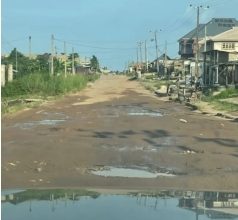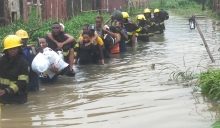
By Suleiman Tajudeen
CITIZENS COMPASS—Child abuse refers to any form of physical, emotional, or psychological harm inflicted on a child, including neglect, exploitation, and violence. It can occur in various settings, such as homes, schools, and communities.
Child abuse in schools
Child abuse in schools refers to any form of physical, emotional, or psychological harm inflicted on a child by a teacher, staff member, or peer within the school environment. This can include physical abuse, emotional abuse, sexual abuse, or neglect.
Child abuse at home
Child abuse at home refers to any form of physical, emotional, or psychological harm inflicted on a child by a parent, guardian, or caregiver within the home environment.
Prevalence
According to the World Health Organization (WHO), six in 10 children under five years of age regularly suffer physical punishment and/or psychological violence at the hands of parents and caregivers. Additionally, one in five women and One in seven men report having been sexually abused as a child. Six in 10 children under five years of age regularly suffer physical punishment and/or psychological violence at the hands of parents and caregivers, which can also occur in school settings.
Signs, symptoms
Child abuse can manifest in various ways, and it is essential to recognize the signs and symptoms to provide timely support and intervention. Here are some common signs and symptoms of child abuse:
Physical abuse
Unexplained injuries: Bruises, burns, cuts, or fractures that can’t be explained or seem suspicious.
Injuries in various stages: Bruises or injuries in different stages of healing, indicating repeated abuse.
Injuries in unusual locations: Injuries on areas of the body that are not typically injured accidentally, such as the back, buttocks, or genitals.
Frequent hospital visits: A child who is frequently taken to the hospital for injuries or complaints that seem suspicious or unrelated.
Emotional abuse:
Changes in behaviour: Sudden changes in behaviour, such as becoming withdrawn, anxious, or aggressive.
Low self-esteem: A child who has a consistently negative self-image or seems overly critical of themselves.
Difficulty trusting others: A child who has difficulty forming trusting relationships with adults or peers.
Emotional instability: A child who exhibits extreme mood swings, anxiety, or depression.
Neglect:
Poor hygiene: A child who consistently appears dirty, unwashed, or unkempt.
Inadequate clothing: A child who wears clothes that are dirty, torn, or inadequate for the weather.
Malnutrition: A child who appears malnourished or is frequently hungry.
Lack of supervision: A child who is left unsupervised for extended periods or is allowed to engage in hazardous activities.
Sexual abuse:
Unusual behaviour: A child who exhibits unusual or age-inappropriate sexual behavior or knowledge.
Physical signs: Physical signs of sexual abuse, such as genital injuries, pain, or bleeding.
Changes in behavior: Sudden changes in behavior, such as becoming withdrawn, anxious, or aggressive.
Inappropriate relationships: A child who is in a relationship with an adult or older child that seems inappropriate or coercive.
Child abuse has been a persistent problem throughout history, with evidence of child maltreatment dating back to ancient civilizations. Here’s a historical perspective on child abuse in Nigeria and globally:
Global perspective
Reports have shown that about 226 out of 1,000 children globally experience physical abuse.
Ancient civilizations: Child abuse was prevalent in ancient civilizations such as Greece and Rome, where children were often subjected to physical punishment, exploitation, and abandonment.
Middle ages: During the Middle Ages, children were often treated harshly, with physical punishment and exploitation being common practices.
Industrial revolution: The Industrial Revolution brought about significant changes in the lives of children, with many being forced to work in factories and mines under hazardous conditions.
United States: Approximately One in seven children experience child abuse or neglect.
Africa: Child abuse is a significant problem in many African countries, including Nigeria, South Africa, and Egypt.
Asia: Child abuse is prevalent in many Asian countries, including India, China, and the Philippines.
Europe: Child abuse is a concern in many European countries, including the UK, Germany, and France.
South America: Child abuse is a significant problem in many South American countries, including Brazil and Argentina.
Australia: Child abuse is a concern in Australia, with many children experiencing physical, emotional, or sexual abuse.
Canada: Child abuse is a significant problem in Canada, with many children experiencing physical, emotional, or sexual abuse.
Global response: The global community is working to prevent child abuse and protect children’s rights.
20th century: The 20th century saw a growing recognition of children’s rights, with the establishment of organizations such as Save the Children and the United Nations Convention on the Rights of the Child (CRC).
Nigerian perspective:
Six out of every 10 children in Nigeria experience some form of violence or abuse.
Pre-colonial era: In pre-colonial Nigeria, children were valued for their contribution to family and community life. However, child labor and exploitation were also common.
Colonial era: During the colonial era, Nigerian children were exposed to forced labor, corporal punishment, and other forms of exploitation.
Post-colonial era: After independence, Nigeria continued to struggle with child abuse and exploitation, with many children being forced into labor, trafficking, and other forms of exploitation.
Modern era: In recent years, Nigeria has made significant progress in addressing child abuse, with the establishment of laws and policies to protect children’s rights.
Major causes
To be continued…
References
Nwokolo, C. N., & Nwokolo, P. C. (2020). The prevalence and consequences of child abuse in Nigeria. Journal of Child Abuse & Neglect, 102, 104729.
UNICEF Nigeria. (2020). Situation Analysis of Children in Nigeria.
World Health Organization. (2019). Violence Against Children and Adolescents: Nigeria Country Report.
Dr Suleiman Tajudeen is Director, Clinical Psychology, LUTH (Retired) & CEO/Director of Clinical Psychology, Clear Mind Psychological Consult, Km 15, Badagry Expressway, Ojo, Lagos State. +234 803 402 4457






